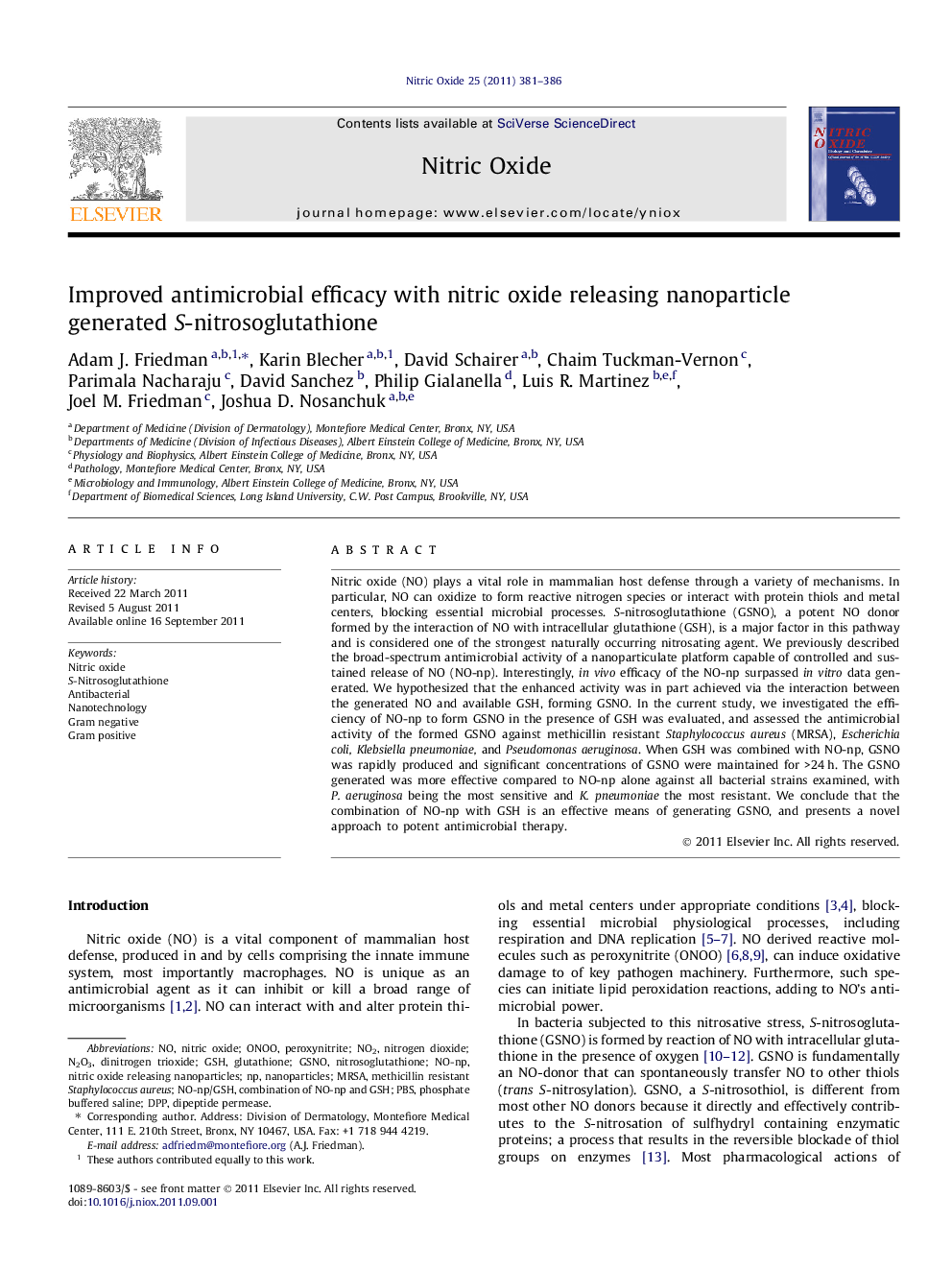| Article ID | Journal | Published Year | Pages | File Type |
|---|---|---|---|---|
| 2001215 | Nitric Oxide | 2011 | 6 Pages |
Nitric oxide (NO) plays a vital role in mammalian host defense through a variety of mechanisms. In particular, NO can oxidize to form reactive nitrogen species or interact with protein thiols and metal centers, blocking essential microbial processes. S-nitrosoglutathione (GSNO), a potent NO donor formed by the interaction of NO with intracellular glutathione (GSH), is a major factor in this pathway and is considered one of the strongest naturally occurring nitrosating agent. We previously described the broad-spectrum antimicrobial activity of a nanoparticulate platform capable of controlled and sustained release of NO (NO-np). Interestingly, in vivo efficacy of the NO-np surpassed in vitro data generated. We hypothesized that the enhanced activity was in part achieved via the interaction between the generated NO and available GSH, forming GSNO. In the current study, we investigated the efficiency of NO-np to form GSNO in the presence of GSH was evaluated, and assessed the antimicrobial activity of the formed GSNO against methicillin resistant Staphylococcus aureus (MRSA), Escherichia coli, Klebsiella pneumoniae, and Pseudomonas aeruginosa. When GSH was combined with NO-np, GSNO was rapidly produced and significant concentrations of GSNO were maintained for >24 h. The GSNO generated was more effective compared to NO-np alone against all bacterial strains examined, with P. aeruginosa being the most sensitive and K. pneumoniae the most resistant. We conclude that the combination of NO-np with GSH is an effective means of generating GSNO, and presents a novel approach to potent antimicrobial therapy.
